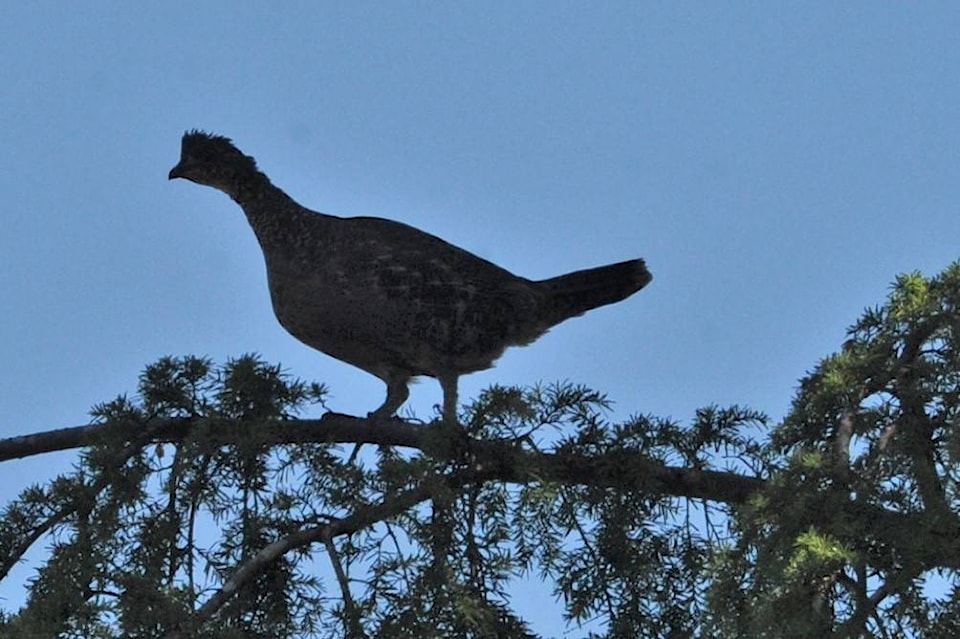Jim Hilton
Special to the Tribune
After living on a south-facing Douglas fir forested slope for over four decades we have come to appreciate some of the wildlife species. The mule deer enjoy the addition of shrubs, vegetables and flowers along with some fruit and berry trees which have necessitated the building of fences. We have also appreciated a family of blue grouse that uses the domestic plants as part of their summer food supply. We also hope they are adding a little fertilizer and eating some of the ticks that come with the deer.
I have been trying to practice some permaculture activities so I thought it would be useful to do some research on blue grouse habits. While most of the research seemed to be done on the Lower Mainland, hopefully some principles may apply to the Interior.
It turns out that they have an interesting relationship with forestry practices. Extensive logging of key winter range (especially clearcuts) can significantly reduce local grouse numbers. On the other hand, logging can dramatically increase the extent and suitability of summer range and breeding habitat, and that can trigger a blue grouse population explosion (especially if weather is favourable for chicks).
This inflated population may continue for several years until the forest canopy begins to close in. Eventually, in a dense, second-growth forest, there will be few blue grouse. Where we live the Townsend Solitaires use the native Juniper berries during the winter but the Blue Grouse seem to disappear when the snow comes. According to some detailed research in the south, the arrival of the snow causes the family groups to break up with juveniles and females looking for suitable diets of mostly coniferous needles. Migration is either up hill or into lower areas depending on where the best food and shelter is available. Some describe this migration as impressive as many birds may be involved.
READ MORE: Controlling knapweed one plant at a time
Only once during my winter activities near my property have I encountered blue grouse feeding area. If I recall correctly it was in fairly dense immature stand and judging from the abundant droppings in the area they had been there for a number of days. Some other studies indicated that it is the large diameter fir trees that are the preferred habitat.
According to a study in Utah, an important key to continuous maintenance of breeding populations of blue grouse appears to be the presence of a well-developed and diverse understory.
“Alternatives to present clear-cutting practices that would leave a more open tree canopy would probably provide continuous production of grouse and many other species, albeit at a lower density than sometimes results from present programs.”
With the potential of food shortages this year due to the COVID crisis, I did experiment with producing more food on my property. One thing I learned last summer is that blue grouse heavily used a patch of grass and legumes that I planted in a forested area using the addition of an inoculated biochar mix. I would think the meat of these grouse would be desirable after having the legumes as a major part of their diet. Many hunters consider this grouse one of the prime native game birds in the province and at over one kilo for a mature bird they provide a significant food source. As it is now with the numbers that we have I will settle for the pleasure of having them around for fertilization benefits, insect control and their friendly demeanor.
Jim Hilton is a professional agrologist and forester who has lived and worked in the Cariboo Chilcotin for the past 40 years. Now retired, Hilton still volunteers his skills with local community forests organizations.
